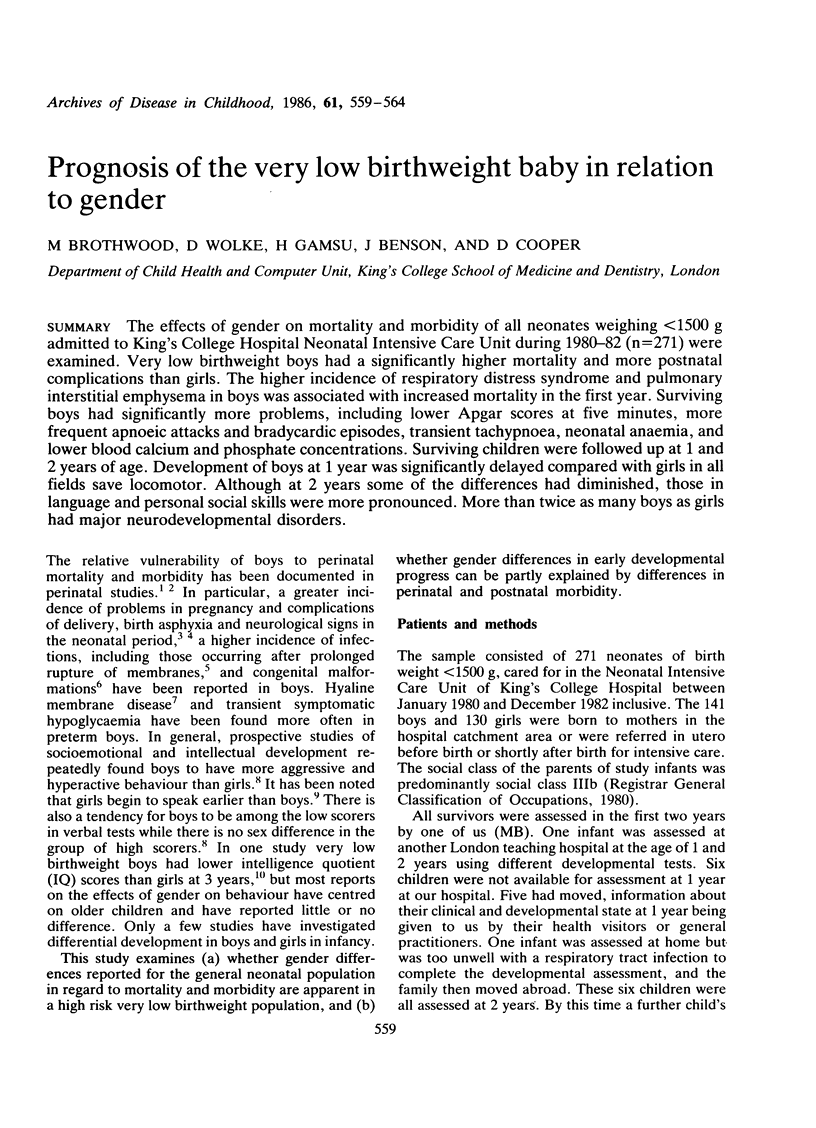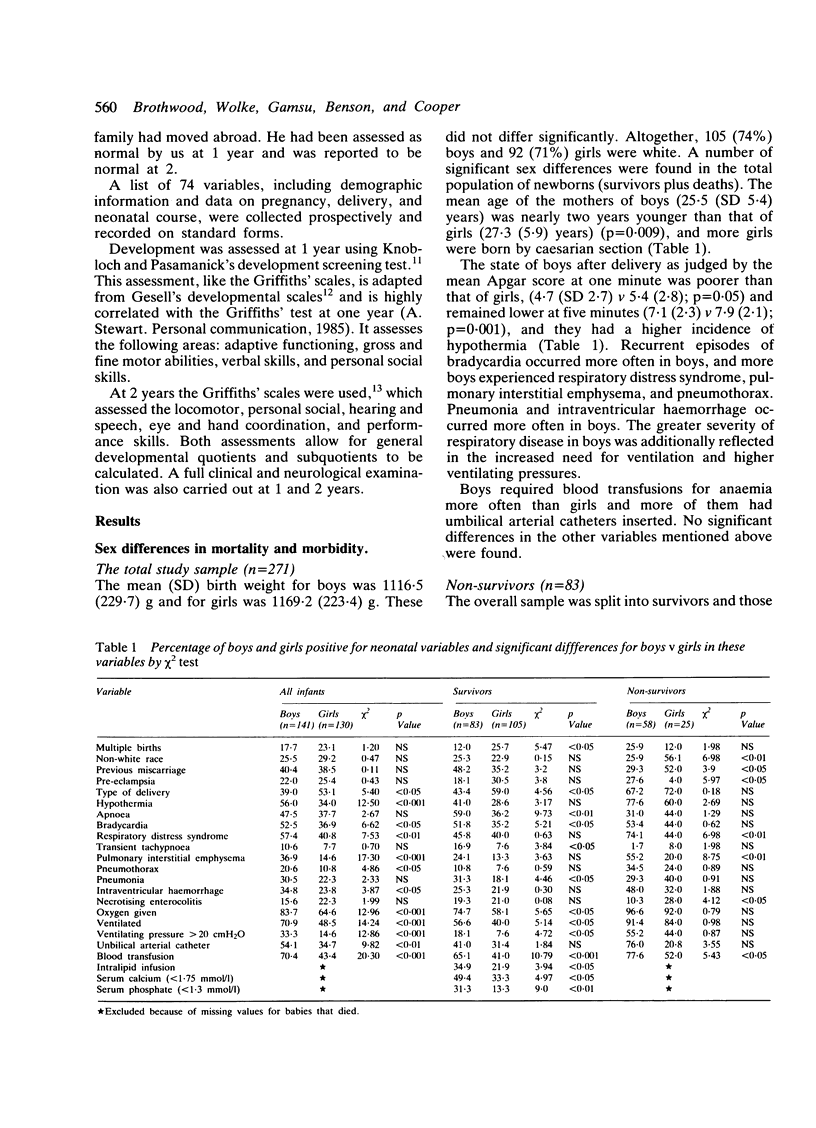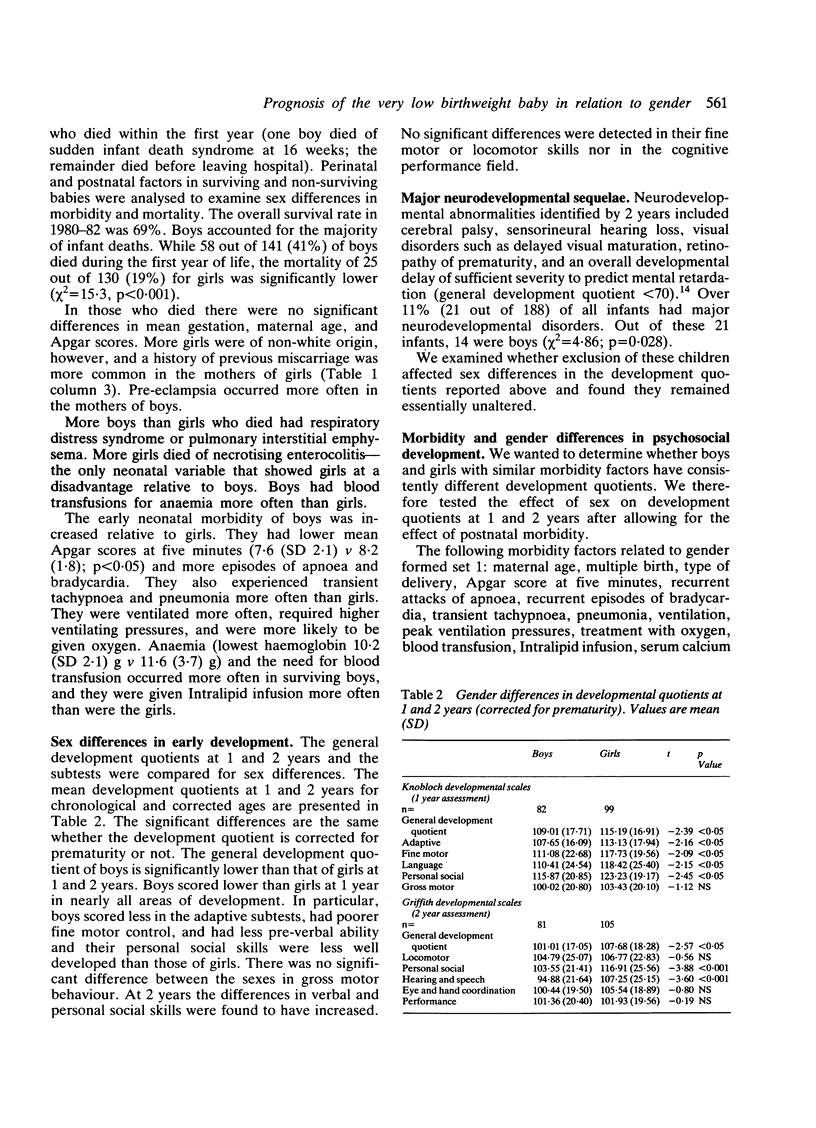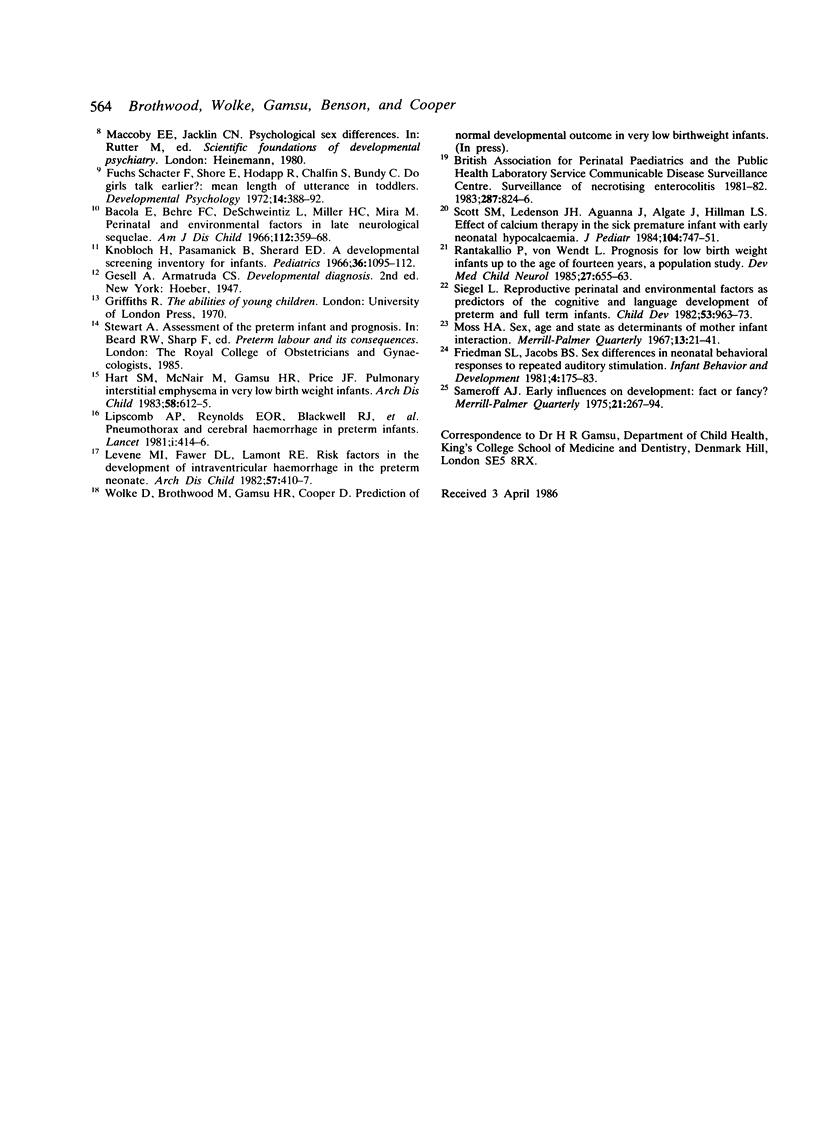Abstract
The effects of gender on mortality and morbidity of all neonates weighing less than 1500 g admitted to King's College Hospital Neonatal Intensive Care Unit during 1980-82 (n = 271) were examined. Very low birthweight boys had a significantly higher mortality and more postnatal complications than girls. The higher incidence of respiratory distress syndrome and pulmonary interstitial emphysema in boys was associated with increased mortality in the first year. Surviving boys had significantly more problems, including lower Apgar scores at five minutes, more frequent apnoeic attacks and bradycardic episodes, transient tachypnoea, neonatal anaemia, and lower blood calcium and phosphate concentrations. Surviving children were followed up at 1 and 2 years of age. Development of boys at 1 year was significantly delayed compared with girls in all fields save locomotor. Although at 2 years some of the differences had diminished, those in language and personal social skills were more pronounced. More than twice as many boys as girls had major neurodevelopmental disorders.
Full text
PDF





Selected References
These references are in PubMed. This may not be the complete list of references from this article.
- Bacola E., Behrle F. C., De Schweinitz L., Miller H. C., Mira M. Perinatal and environmental factors in late neurogenic sequelae. I. Infants having birth weights under 1,500 grams. Am J Dis Child. 1966 Oct;112(4):359–368. doi: 10.1001/archpedi.1966.02090130133013. [DOI] [PubMed] [Google Scholar]
- Hart S. M., McNair M., Gamsu H. R., Price J. F. Pulmonary interstitial emphysema in very low birthweight infants. Arch Dis Child. 1983 Aug;58(8):612–615. doi: 10.1136/adc.58.8.612. [DOI] [PMC free article] [PubMed] [Google Scholar]
- Knobloch H., Pasamanick B., Sherard E. S., Jr A developmental screening inventory for infants. Pediatrics. 1966 Dec;38(6 Suppl):1095–1108. [PubMed] [Google Scholar]
- Levene M. I., Fawer C. L., Lamont R. F. Risk factors in the development of intraventricular haemorrhage in the preterm neonate. Arch Dis Child. 1982 Jun;57(6):410–417. doi: 10.1136/adc.57.6.410. [DOI] [PMC free article] [PubMed] [Google Scholar]
- Lipscomb A. P., Thorburn R. J., Reynolds E. O., Stewart A. L., Blackwell R. J., Cusick G., Whitehead M. D. Pneumothorax and cerebral haemorrhage in preterm infants. Lancet. 1981 Feb 21;1(8217):414–416. doi: 10.1016/s0140-6736(81)91794-3. [DOI] [PubMed] [Google Scholar]
- Naeye R. L., Burt L. S., Wright D. L., Blanc W. A., Tatter D. Neonatal mortality, the male disadvantage. Pediatrics. 1971 Dec;48(6):902–906. [PubMed] [Google Scholar]
- Rantakallio P., von Wendt L. Prognosis for low-birthweight infants up to the age of 14: a population study. Dev Med Child Neurol. 1985 Oct;27(5):655–663. doi: 10.1111/j.1469-8749.1985.tb14138.x. [DOI] [PubMed] [Google Scholar]
- Scott S. M., Ladenson J. H., Aguanna J. J., Walgate J., Hillman L. S. Effect of calcium therapy in the sick premature infant with early neonatal hypocalcemia. J Pediatr. 1984 May;104(5):747–751. doi: 10.1016/s0022-3476(84)80960-9. [DOI] [PubMed] [Google Scholar]
- Siegel L. S. Reproductive, perinatal, and environmental factors as predictors of the cognitive and language development of preterm and full-term infants. Child Dev. 1982 Aug;53(4):963–973. [PubMed] [Google Scholar]
- St Geme J. W., Jr, Murray D. L., Carter J., Hobel C. J., Leake R. D., Anthony B. F., Thibeault D. C., Ross I. B., Drage J. S. Perinatal bacterial infection after prolonged rupture of amniotic membranes: an analysis of risk and management. J Pediatr. 1984 Apr;104(4):608–613. doi: 10.1016/s0022-3476(84)80562-4. [DOI] [PubMed] [Google Scholar]
- Williams P. D., Williams A. R. Factors affecting development of children at risk. J Pediatr Psychol. 1985 Mar;10(1):77–86. doi: 10.1093/jpepsy/10.1.77. [DOI] [PubMed] [Google Scholar]


